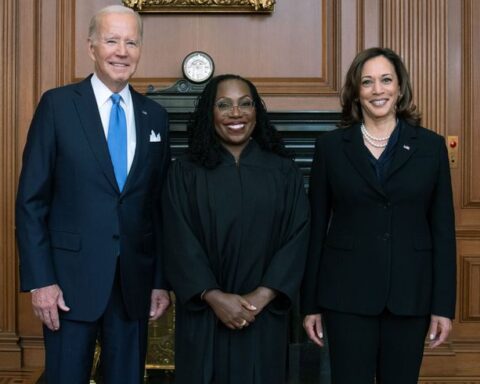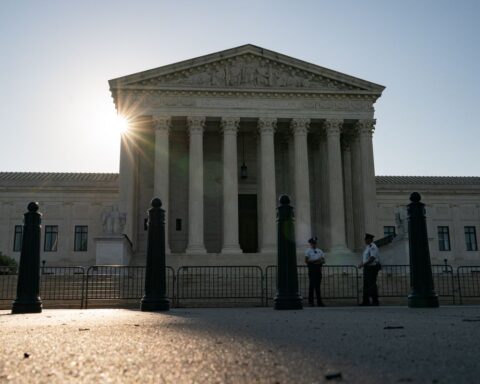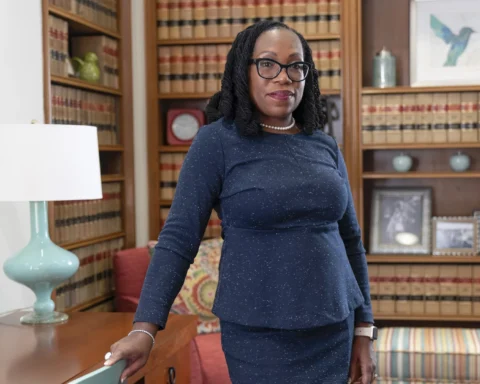One Black woman won’t quickly right the ship of a 6-3 court unmoored from principle, but dissenting opinions have influenced the court and Congress to pursue changes to laws.
The Supreme Court has made thousands of decisions over hundreds of years that have shaped the lives of millions of people. And, astonishingly, at no point in the court’s multicentury history has any Black woman had a say in making any of the decisions we have had to abide by.
Until now.
For the first time, a Black woman has been nominated to the Supreme Court.
An abundance of scholarly research and data helps show why this nomination is so significant. Judicial diversity does not merely change how a court looks. It changes how a court acts. Limited, homogenous groups are ill-equipped to serve broad, diverse populations — especially when that very diversity directly shapes their rights and influences their material conditions. Expanding the historically narrow pool of who gets to be on our courts can also expand the similarly narrow pool of who the courts often serve.
Decades’ worth of academic literature has repeatedly demonstrated that judges belonging to marginalized groups typically bring a different judicial perspective to the bench. For instance, a much-cited 1997 survey found that over 90 percent of white judges agreed that “Blacks have made considerable progress in securing civil rights,” while less than half of Black judges deemed that progress “considerable.” And, according to the survey, upward of 80 percent of white judges believed Black litigants were treated fairly by the criminal legal system — an opinion with which only 18 percent of Black judges agreed.
When judicial deliberations include the viewpoints of people of color, however, other judges often begin to question their prior assumptions and sometimes even change their minds. A 2008 study observed that Black judges were substantially more likely to hold the government responsible for racial discrimination in voting. Incredibly, white judges who sat on panels with at least one Black judge were also considerably more likely to conclude that the government unlawfully restricted the voting rights of people of color, regardless of whether the white judge was appointed by a Democrat or a Republican. Similarly, a 2013 study found that Black judges are significantly more likely than non-Black judges to rule in favor of affirmative action programs. Importantly, when a Black judge was added to a panel that previously had no Black representation, a non-Black judge became roughly 20 percent more likely to also uphold the legality of an affirmative action program.
Demographics are not determinative, surely. Critics have long observed the chasm between mainstream Black views and those of Justice Clarence Thomas, the sole Black person currently on the court. And adding one Black woman to the bench, without substantive court reform, is unlikely to quickly right the ship of a radical 6-3 court unmoored from precedent and principle.
But, as the late Justice Ruth Bader Ginsburg once explained, dissenting opinions can and have influenced the court and Congress to pursue changes to law and policy. The data is clear that the deliberative process is enhanced when the values and perspectives of marginalized groups are meaningfully included. By that same token, it is harmful to allow an unrepresentative set of values or views to dominate the decision-making body. If one recognizes that “personal experiences affect the facts that judges choose to see,” as Justice Sonia Sotomayor said during her confirmation process, one must reckon with the vastness of experiences that have been deliberately rendered invisible, and how they could have altered outcomes had they been seen. Prior to Justice Thurgood Marshall’s joining the court in 1967, for example, every Supreme Court decision ever made reflected what a handful of white men decided was best for everyone else in the country. Marshall himself recognized this inherent structural weakness, and plainly articulated how his perspective contributed to the breadth of his colleagues’ knowledge and analytical abilities: “What do they know about Negroes? You can’t name one member of this court who knows anything about Negroes before he came to this court.” Prior to Justice Thurgood Marshall’s joining the court in 1967, for example, every Supreme Court decision ever made reflected what a handful of white men decided was best for everyone else in the country. Marshall himself recognized this inherent structural weakness, and plainly articulated how his perspective contributed to the breadth of his colleagues’ knowledge and analytical abilities: “What do they know about Negroes? You can’t name one member of this court who knows anything about Negroes before he came to this court.”
Research has shown that the exclusion and delegitimation of marginalized communities’ perspectives has consequences for legal decision-making and the administering of justice. The judiciary cannot fulfill its promise of equal justice under the law when huge swaths of the country are always the judged, never the judge. The extremist supermajority of today’s Supreme Court provides a grim example of what can happen when a limited appreciation of relevant facts and legal interpretation proceeds unabated without meaningful challenge.
The historic nomination of a Black woman to the Supreme Court can and should prompt further interrogation as to improving the composition and structure of the judicial system. Diversifying the courts is a first step at empowering the judiciary to provide justice for all.





